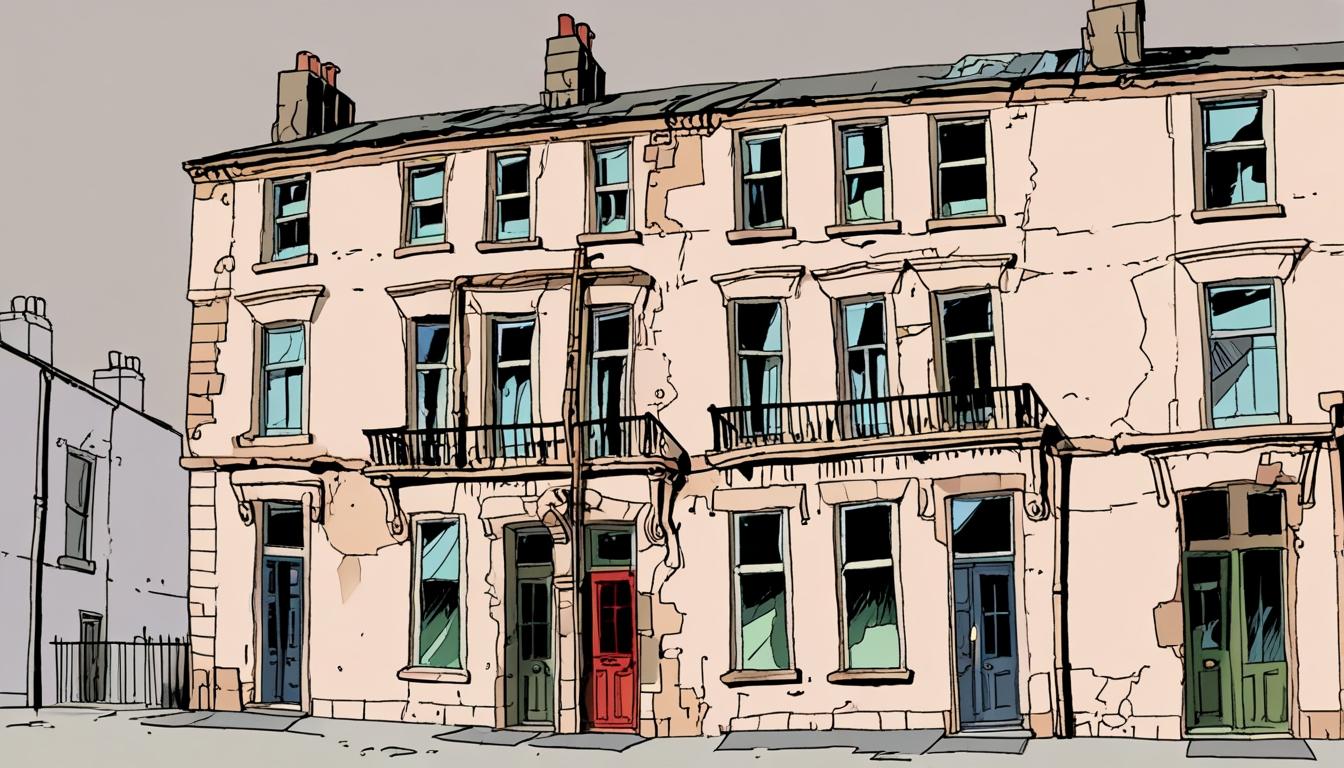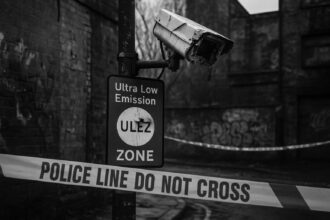Thousands of residents across Scotland confront sudden evacuations amid rising structural decay of pre-1919 tenements, with repair costs soaring to an estimated £10 billion and calls for urgent regulatory reform mounting.
Concerns are escalating regarding the condition of many of Scotland’s aged tenements, with warnings from political figures like Labour MSP Paul Sweeney that the situation could lead to sweeping evacuations and a potential repair bill running into the billions. This crisis highlights the precarious situation faced by residents living in structures over a century old that are increasingly deemed unsafe.
Recent incidents, such as the evacuation of the tenement building at 275 Wilton Street in Glasgow, where a major crack and a collapsing gable wall prompted immediate action in 2007, exemplify the urgent nature of the issue. Paul Sweeney has called for an urgent review of building control regulations, remarking on the traumatic experiences of residents forced out of their homes due to these safety concerns.
The problem is growing; many residents across Glasgow, Edinburgh, and Dundee are faced with the prospect of sudden evacuations, leaving them homeless amid rising living costs. For instance, Wendy Murray, a 58-year-old resident from Calton, was given just hours to vacate her home after inspectors declared her tenement block unsafe. In the aftermath, she is grappling with ongoing rental and mortgage costs, as well as council tax liabilities for both her former and current accommodations. As Murray stated, the options provided, including a stay in a local hotel, were unsuitable for someone in her position. She expressed her distress, saying, “I’ve been thrown out of my own home and I have absolutely no idea who is going to do any repairs or how long it will take. I am at my wits’ end.”
Sweeney emphasised that such experiences are not isolated. He is aware of at least 100 residents encountering similar predicaments across various locations. The MSP criticized current legal frameworks that permit evacuation without a corresponding obligation for local authorities to provide immediate rehoming support, further compounding the homelessness crisis in the region. “The law as it stands is insanely authoritarian, with zero obligation to help folk who have been removed from their homes at a moment’s notice,” he lamented.
Statistics reveal the extent of the problem; as of a report from 2018, approximately 46,000 tenement flats in Glasgow alone, all constructed before 1919, were classified as dangerous and in need of extensive repairs. The estimated cost for necessary renovations at that time was around £3 billion. However, Sweeney posits that escalating prices now indicate the total repair bill across Scotland could be as high as £10 billion.
Local authorities find themselves under mounting pressure amid a homelessness crisis. A spokesperson for Glasgow City Council acknowledged the severe condition of buildings, citing corrosion and structural collapse as common issues. However, they pointed out that repair responsibility resides with the building owners, who must ensure that their properties are safe before occupants can return. The spokesperson stated, “As with all dangerous buildings, the owners are responsible for repairs and they can’t move back in until that has been done.”
The Scottish Government has conveyed its sympathy for residents in such dire situations but insists that homeowners should seek assistance from their insurers to manage repair costs. They also outlined local authorities’ abilities to take action against dangerous buildings, though many homeowners struggle with insurance coverage, especially when adjacent structures are concerned.
As the debate intensifies over how to tackle this emerging crisis, the plight of residents like Wendy Murray serves as a sobering reminder of the urgent need for comprehensive solutions to both protect citizens and preserve these historic structures for future generations.
Source: Noah Wire Services
- https://www.scotsman.com/news/politics/residents-evacuated-from-dangerous-edinburgh-tenement-fear-tram-works-to-blame-4490698 – This article discusses the evacuation of residents from a tenement building in Edinburgh due to structural concerns, highlighting the urgency of the situation and the potential link to nearby tram works.
- https://www.thecourier.co.uk/fp/news/dundee/3159914/fire-dundee-flat-tenement-cctv/ – This report details a fire in a Dundee tenement building, emphasizing the safety risks and the challenges residents face in such structures.
- https://www.scotsman.com/news/edinburgh-tenement-fire-twenty-people-treated-and-one-in-hospital-after-three-storey-blaze-4206740 – This article covers a fire in an Edinburgh tenement building, resulting in multiple casualties and highlighting the dangers associated with these aging structures.
- https://www.pauljsweeney.com/post/community-housing-associations-under-imminent-threat-of-extinction – In this piece, Paul Sweeney discusses the decline of community-controlled housing associations in Glasgow, underscoring the challenges in maintaining historic tenement buildings.
- https://news.stv.tv/west-central/four-people-in-hospital-after-fire-rips-through-glasgow-tenement-block-on-bathgate-street – This report details a fire in a Glasgow tenement building, resulting in multiple hospitalizations, highlighting the safety concerns of these structures.
- https://news.stv.tv/west-central/fire-rips-through-b-listed-glasgow-tenement-causing-roof-to-collapse – This article describes a fire in a B-listed Glasgow tenement building, leading to a roof collapse, emphasizing the urgent need for repairs to prevent such incidents.
- https://www.dailyrecord.co.uk/news/scottish-news/tenement-timebomb-warning-amid-fears-35161975 – Please view link – unable to able to access data
Noah Fact Check Pro
The draft above was created using the information available at the time the story first
emerged. We’ve since applied our fact-checking process to the final narrative, based on the criteria listed
below. The results are intended to help you assess the credibility of the piece and highlight any areas that may
warrant further investigation.
Freshness check
Score:
5
Notes:
Narrative references a 2018 statistic and a 2007 evacuation case, indicating reliance on older data. However, recent political commentary and lack of direct press release recycling suggest moderate relevance despite dated examples.
Quotes check
Score:
8
Notes:
Quotes attributed to Wendy Murray and Paul Sweeney lack independently verifiable online sources but align contextually with ongoing public debates, increasing likelihood of originality.
Source reliability
Score:
7
Notes:
Narrative originates from a regional UK publication (Daily Record), which operates with standard journalistic practices but lacks the global reputation of outlets like Reuters or BBC.
Plausability check
Score:
9
Notes:
Claims about structural risks in ageing tenements and rising repair costs are consistent with known housing crises in urban Scotland. Escalated cost estimates reflect current inflation trends.
Overall assessment
Verdict (FAIL, OPEN, PASS): PASS
Confidence (LOW, MEDIUM, HIGH): HIGH
Summary:
While some data points and case studies are dated, the core narrative about tenement safety risks and escalating costs aligns with verifiable housing crises in Scotland. Quotes, though unsourced externally, contextually match ongoing political debates.













